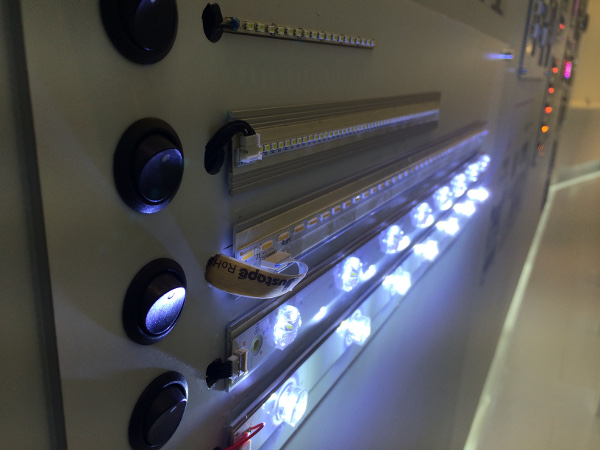(Author: Ivan Lin, Editor-in-Chief, Content Development Divisionhttp://Translator: Judy Lin, Chief Editor, LEDinside)
A report from Korean media ET News claimed Chinese manufacturers San’an Opto and HC Semitek joined Epistar’s lead in raising LED chip prices, which Korean media and others analyzed was a sign that plummeting LED chip prices finally rebounded. However, LEDinside found the Korean media report was not an exclusive interview with senior executives from San’an Opto, nor was it a large scale price adjustment.
In the Korean media report, the San’an Opto official interviewed commented: “Starting from May 2016, certain LED chip prices were raised by 10%.” He also explained “market prices are affected by supply and demands.” A San’an Opto source revealed to LEDinside, they have no intention of significantly raising chip prices, but some Chinese LED chip suppliers have made incremental price raises, mainly since second-tier LED package manufacturers are willing to secure chip supply at a higher price.
 |
|
LED strip lights. (LEDinside) |
San’an Opto’s operations in 2016 benefited from subsidies and other government policies, and it has continued to roll out production expansion strategies. In early 2016, the company acquired 28 new MOCVDs, this is equivalent to the production capacity of around 56 old machines based on 2-inch EPI-wafers (54 PCS) calculations. About 12 of the 28 MOCVDs entered production since March 2016, which raised utilization rates and production capacity. Since San’an Opto is aiming to lower costs, the impact of increased production on future LED chip prices will require further observations.
Nichia’s lawsuits in U.S. and Europe will ensure patented LED chip prices, high power LED chip prices have risen the most. These products have much higher technology entry level, and low volumes of market supply. Additionally, Japanese manufacturer Nichia initiated a series of lawsuits in Northern America and Europe against end-product manufacturers and other downstream clients. This has also allowed manufacturers with patent protected LED chips to possess much better price negotiating capabilities and improve their price quotes.
Since clients were introducing new LED products much slower than expected in the backlight market from May to June 2016, backlight demands markedly dropped, according to LEDinside analysts. The new growth momentum will have to wait till after July to August to take effect, and LED lighting market demands are expected to decline after June 2016. Yet, observations based on LED manufacturers and lighting brand Philips annual conference show, despite heavy losses incurred by each LED manufacturer, Philips still procured large volumes of products that cushioned the price falls in late 2016. Overall, LED market prices are relatively stable compared to 2015.
Oversupply of LED chips in the market has led many LED package manufacturers to be optimistic about potential price upticks.
Everlight’s Director and President of Business Group Ban Yan Liu also recently commented on Epistar’s product price hike at the Guangzhou International Lighting Fair (GILE) 2016: “If that is the case, then it will depend on whether Chinese manufacturers will keep status quo or raise prices, hence we haven’t seen many LED chip manufacturers in China lower prices this year. We would be delighted if we could raise prices, but are still speculating at the moment, much of this decision process will depend on demand. Due to the oversupply situation, there might be changes to when the prices will be adjusted.”
Due to the above mentioned factors, certain LED chip prices have not been affected by the price falls, but in general manufacturers are expanding production capacity to lower costs. In the future, the industry will still be expanding its LED lighting demands and niche market applications. It will be very difficult for LED backlight market to keep up growth.





 CN
TW
EN
CN
TW
EN





